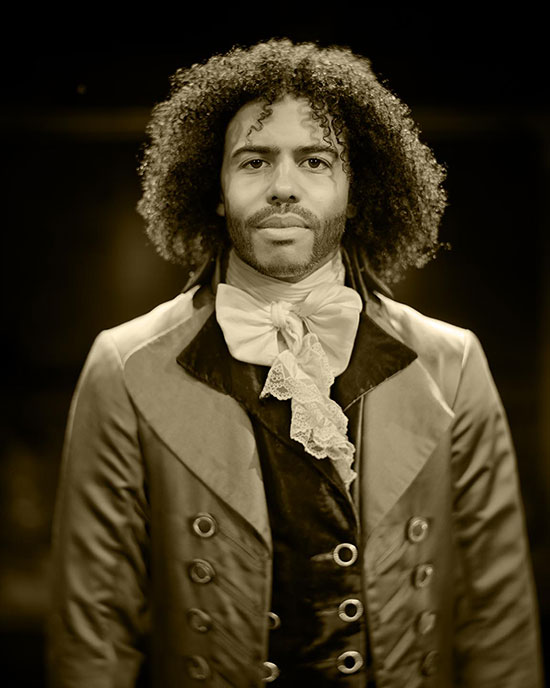When designing an interior, my goal is to create an authentic narrative. A home is not simply a room full of furniture, but a collage of place, time and those who inhabit it. The features of this collage initially may seem abstract, but they are formed and influenced by the various decisions that are made by a home’s designers.
When selecting objects, I look for features that are original—pieces from all periods crop up in every room, with the goal of establishing a tension between past and present, old and new. For an interior I designed in Bridgehampton, antiques such as an 18th century wooden-backed settee were combined with vintage industrial and antique workmen’s artifacts and set off by contemporary art. The age of the different objects emphasizes the passage of time, while the mixture of styles creates the link that makes the room feel modern.
Sometimes one truly exceptional object sets the tone for an entire room. In a project for a Manhattan apartment, a Josef Hoffmann Sitzmaschine armchair from 1905 provides historical and visual complexity to a room designed with clean modern lines. When we look at design with a historical vision, countless stories are available to help capture a space’s true essence.
.

Bridgehampton Home by Huniford Design Studio.
.
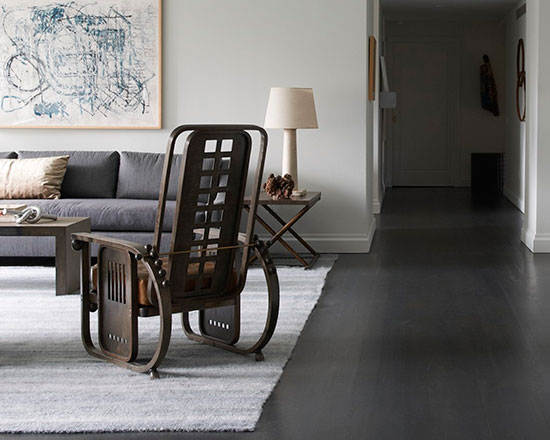
Manhattan Apartment by Huniford Design Studio.
.
When considering the idea of time as a design element, inspiration stems from every element of the arts. There are some whose influence is uniquely potent. One such artist is Josh Lehrer, a photographer who uses historical techniques in his work to tell complex stories. I am drawn to how the lack of reproducibility in early photography techniques is so at odds with our contemporary world, a concept that informs some of my design ideas.
For me, Lehrer's images are powerful templates of technique and artistry. They are mesmerizing achievements that recalibrate the past to create art of unprecedented innovation and contemporary power. His transformative talent with time, treatment and truth match and inspire my dedication to imbuing my own designs with the same elements.
Lehrer's photography regularly appears in leading publications and books, including the recently-published, “Hamilton: The Revolution” (Rizzoli Press). It is his rich set of portraits of "Hamilton"—the critically-acclaimed, genre-defying musical created by Lin-Manuel Miranda and produced by Jeffrey Seller—that is motivating me today: Since my own work is heavily influenced by history's timeless radical originality, Lehrer's portraits repurposing the past to presage the future are once again offering me fresh, fabulous fodder.
.
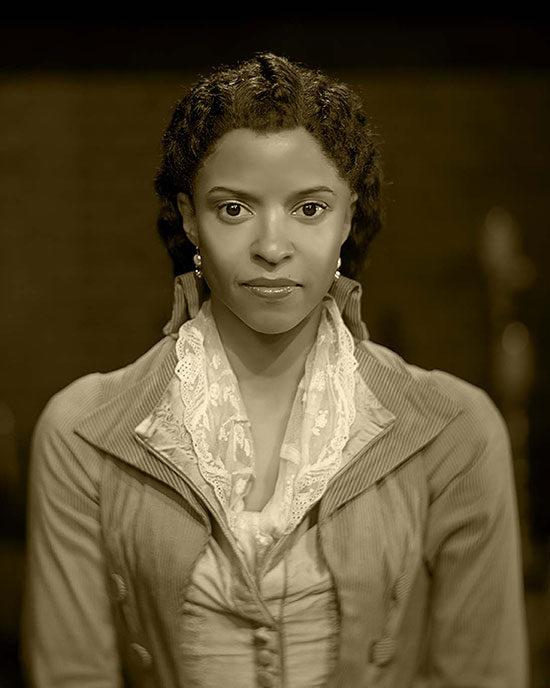
Angelica Schuyler, played by Elise Goldberry. Photograph by Josh Lehrer.
.
As a commercial photographer, Josh Lehrer has created bold, sweeping images that run the gamut from the dons of business to the stars of entertainment to ad campaigns for some of Broadway’s hottest tickets. However, it’s within the graceful poignancy of his portrait series, rendered with alternative process, that his artistry is most vividly on display; the portraits have become a hallmark for which he is now earning wider recognition. Here, by dint of the poetic halos rendered by the historical techniques he employs, combined with the piercing humanity that he elicits in the individuals he photographs, his portraits have become new standards of style and storytelling.
With the new portrait series featuring many of the cast members from the juggernaut Broadway smash-hit “Hamilton”—made with his 19th century camera, ancient lens and historical production techniques—Lehrer is not only showing and telling again, but exhorting the viewers of his work as well.
.
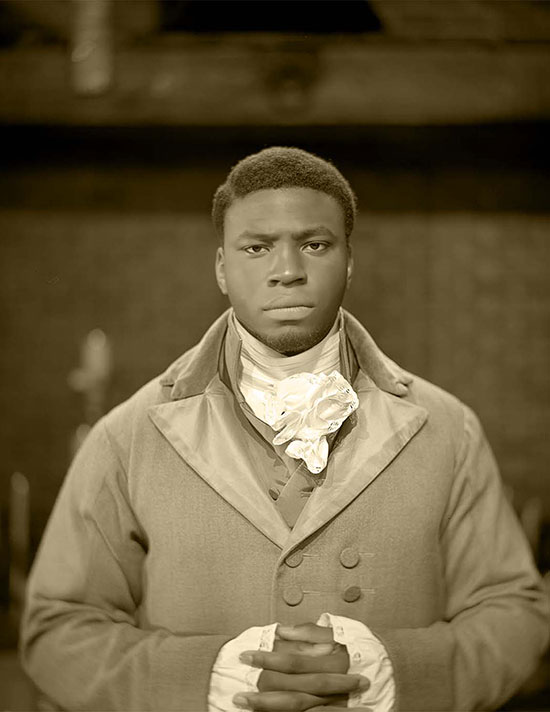
James Madison, played by Okieriete Onaodowan. Photograph by Josh Lehrer.
.
To fully appreciate Lehrer’s “Hamilton” portrait series, it’s important to look first at his 2009 landmark series and exhibition, “Becoming Visible,” acclaimed for bringing attention to New York City’s then all-but-ignored transgender homeless youth. In this series of 80 cyanotype portraits, Josh marshaled the paradoxical attributes of romance and melancholy brought out by his alternative process to reveal the similar fraternal aspects of dignity and struggle particular to the transgendered youths who sat for him. As the artist has said of the images in the “Becoming Visible” series, “Ultimately, they are portraits of survival.”
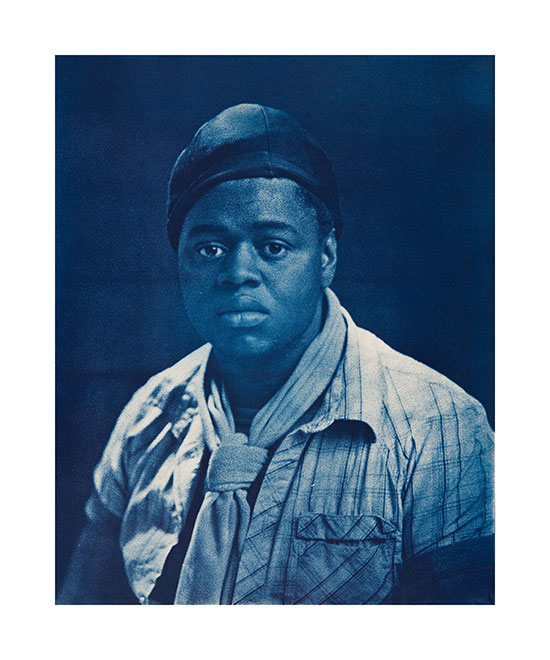
"Tinaya" from the "Becoming Visible" Series by Josh Lehrer.
.
In his new portraits of “Hamilton” cast members, Lehrer’s images again bristle with a new mandate. While his images in “Becoming Visible” stir viewers to compassion, his “Hamilton” images, just like the musical itself, compel a kind of revolution, and in ways that are as individual and personal as any eye that beholds them; revolution great or small.
Posed in their ‘Hamilton” costumes and produced via Lehrer’s signature historical technique, the portraits can almost be perceived as fascinating artifacts from the late 18th century. But the images are anything but old; rather they’re bracingly young. Lehrer has taken the romantic patina of his alternative process and repurposed it into tacit entreaty.
The individuals in the images are simultaneously renowned cast members from the galvanizing show/life event and powerful allegories of the face—and the force—of the world today and, even more, of the world tomorrow.
It’s this feature of Lehrer’s work that makes it so compellingly authentic. Speaking of the intensity of the images in his portrait series, Lehrer has suggested that “we human beings have a yearning for truth and we seek it out in conscious and unconscious ways. So even inside of the artificial structure of a photo shoot, there must be an honest acknowledgement of what is really going on. And I believe that it’s the connection between us that creates that authenticity.”
.
.
In the artist’s words: “That’s why photography is so psychological; I must be as honest and respectful as I can be while holding the space for my subjects to bring as much of their open heart as they are able to. “
Looked at this way, perhaps Mr. Lehrer’s portraits aren’t solely images but also allegorical representations of experience and emotion in all its forms. The resulting images, sepia toned and rich in texture, are contemporary while evoking the past. Like the stories told within the play, the history of each of the characters and each of the prints is unique. As a designer, I am drawn to how the lack of reproducibility in early photography techniques is so at odds with our contemporary world, a tension that my design work also explores.
The combination of eras and ideas in Lehrer’s work parallels what I am working to achieve in a space. Layering antiques, contemporary art and found objects creates an environment that elicits curiosity while invoking the wide expanse of time. And, as in Lehrer’s portraits, this kind of acquired authenticity is what creates an engaging texture in the space. Time itself is one of the most powerful design elements.
To see more photographs by Josh Lehrer of his "Hamilton" and "Becoming Visible" series, view our slideshow:
Josh Lehrer’s "Hamilton" portrait series is slated for future gallery exhibition. They will also be published in calendar form by Rizzoli in 2017.
_______________________________
James “Ford” Huniford is a residential and commercial interior designer with a penchant for pure materials, clean lines and subtle details. He creates spaces that feel both inspiring and livable with his work appearing in Elle Decor, Architectural Digest, The Wall Street Journal, Vogue, W, House Beautiful among others. He is the founder of Huniford Design Studio and Huniford Collection, a line of lighting, upholstery and case goods. Ford has also co-authored the book Dwellings: Living with Great Style. Huniford Design Studio is based in New York City. James “Ford” Huniford is the design columnist for Hamptons Art Hub.
_______________________________
Copyright 2016 Hamptons Art Hub LLC. All rights reserved.

